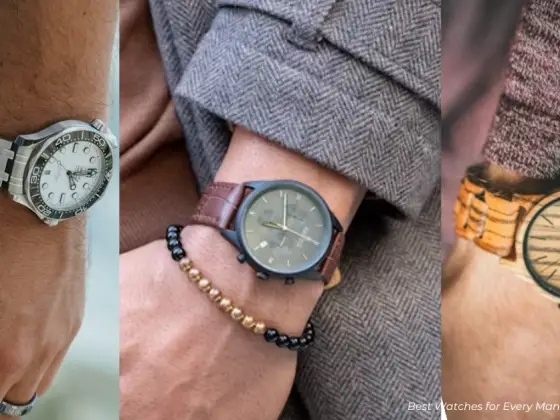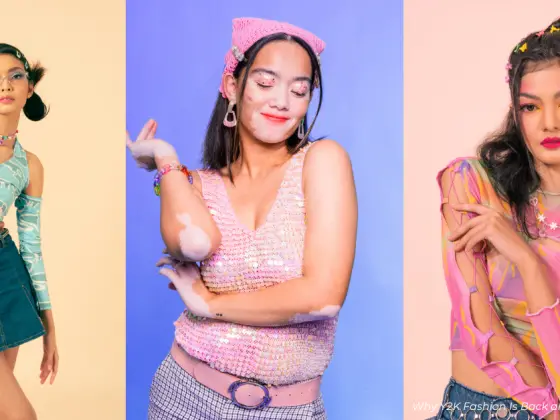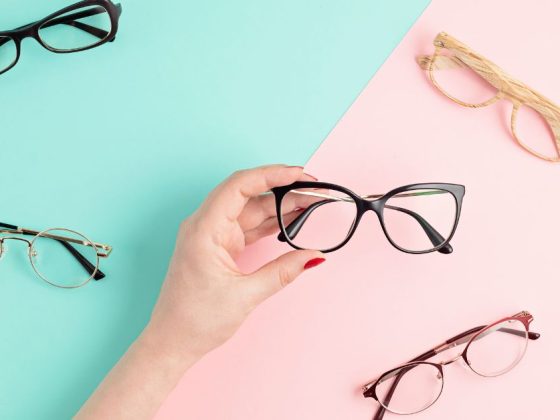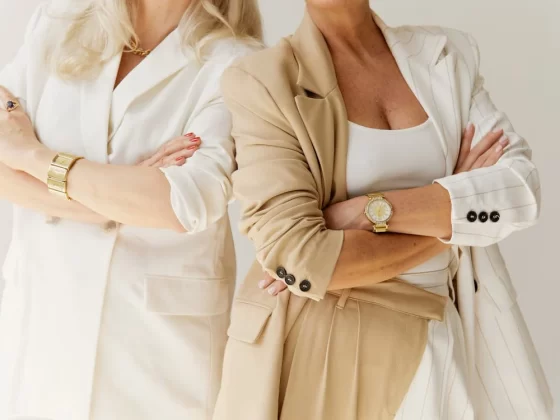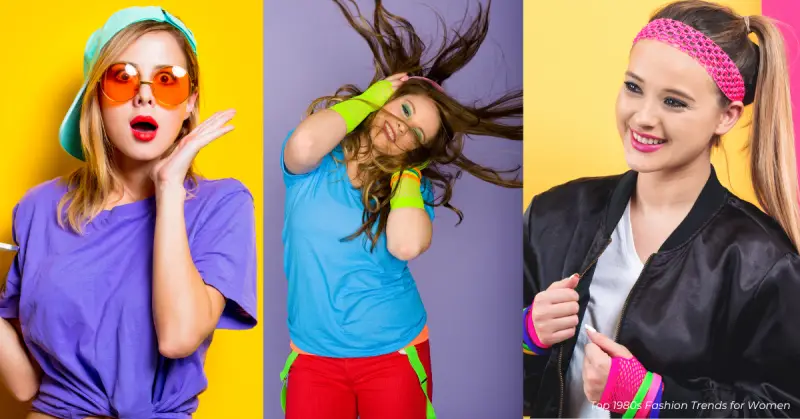
Bold and dramatic changes characterized the 1980s fashion trend. It embraced powerful silhouettes with oversized shoulder pads, structured tailoring, and vibrant, eye-catching colors. This era shifted toward luxury and extravagance, with designers like Jean-Paul Gaultier, Yves Saint Laurent, and Christian Lacroix leading the charge. Their innovative designs pushed traditional fashion’s boundaries, creating commanding and visually striking looks. The decade’s fashion was all about making a statement and asserting individuality.
This emphasis on power and self-expression mirrored a cultural shift during which fashion became a powerful tool for confidence and personal identity. The 1980s marked a blend of rebellion and luxury as styles became more about standing out and less about subtlety. The era’s extravagant trends and bold designs captured the spirit of a time when fashion was dynamic and influential, reflecting broader societal changes and the desire for distinctive, confident self-presentation.
Best 1980s Fashion Trends for Women that are Coming Back
Power Suits: Women Suit Up
Fashion shifted from soft, flexible polyester suits to more structured, angular designs as women sought to assert their power. Thanks to the 1970s Women’s Liberation Movement and a thriving economy, women were eager to make their mark in the workplace. Designers like Claude Montana and Yves Saint Laurent responded with powerful, stylish suits featuring bold shoulder pads, double-breasted cuts, and peplums while celebrating femininity with unique fabrics and vibrant colors.
Couture’s Comeback
The booming economy and growing wealth in the Middle East gave fashion a fresh boost. Yves Saint Laurent continued to lead his label, while Karl Lagerfeld was brought in to revitalize Chanel in 1983. The couture scene also saw exciting new talents like Christian Lacroix, whose tutu-inspired skirts for Fall-Winter 1988 created a buzz. Emanuel Ungaro and Gianfranco Ferré kept couture at the forefront of fashion. Lagerfeld’s impact on Chanel was swift and dramatic, quickly making headlines. Vogue noted in June 1983, “Suddenly, everyone is talking about Chanel, thanks to Karl Lagerfeld.
Leather Jacket, Platform Shoes, and Metal Accents
The 1980s were known for their bold and glamorous fashion, especially in the music industry. To achieve that classic glam-rock look, go for platform shoes, shiny metallic fabrics, leather (or faux leather), and lots of glitter. These elements capture the era’s extravagant fashion. Add pieces like lace, statement belts, gloves, power suits, and oversized blazers to amp up the look. In the ’80s, the motto was “more is more,” so don’t hold back. Embrace the era’s love for bold, attention-grabbing style to channel the decade’s spirit.
The Yuppie Look
The term “yuppie,” meaning “young urban professional,” first appeared in a 1980 Chicago magazine article and quickly became controversial. Some people embraced it, while others saw it as a sign of pretentiousness and gentrification. By the end of the decade, Vogue had criticized the yuppie suit for making women look more stuffy than powerful and predicted its decline.
Despite this, the yuppie style was a big trend in the 1980s. The 1984 book The Yuppie Handbook described the look of women in Ralph Lauren suits, pussy-bow blouses, Coach bags, and running shoes and men in pinstripe suits, Rolex watches, and Burberry trench coats. Ralph Lauren’s take on the style, blending Southwestern and traditional English elements, was praised for its imaginative, distinctly American preppy look.
The Body Con
In Vogue’s December 1982 issue, designer Azzedine Alaïa was described as “hotter than hot” with his body-hugging Lycra dresses that highlighted curves. Known as the “King of Cling,” Alaïa’s designs featured ribbed crew necks and racerback sleeves, blending athletic inspiration with high fashion.
Alaïa wasn’t alone in the body-con trend. Donna Karan, who started her label in 1984, also created flattering, form-fitting dresses. Norma Kamali reworked gym wear with her stylish 1981 Sweats collection, and Gianni Versace began making waves in Italy with his body-celebrating designs.
The New London Look
A vibrant new fashion movement emerged from London, breaking away from the era’s power suits and body-con dresses. While transitioning from Punk to New Romantic, Vivienne Westwood and Malcolm McLaren debuted their 1981 “Pirate” collection. This bold, unisex line drew from 19th-century dandies, featuring billowy ruffled shirts, quirky prints, and dramatic tricorn hats, creating a distinctive look that combined eccentricity with flair.
This fresh style, blending Punk’s eclecticism with Glam Rock’s flamboyance, quickly dominated London’s club scene and was embraced by icons like Boy George and Leigh Bowery. John Galliano’s 1984 Central Saint Martins collection, “Les Incroyables,” reinforced this trend with revolutionary French-inspired designs, layered garments, and bold colors, catapulting him into the fashion spotlight. Designers like Rifat Ozbek, Martin Kidman, and Stephen Jones played vital roles in the New Romantics movement.
Japanese-like Style
This year, they spotlighted groundbreaking designers like Issey Miyake, Rei Kawakubo of Comme des Garçons, and Yohji Yamamoto, who made waves in Paris by the 1980s—standout moments included Miyake’s red plastic bustier from his 1980-81 collection, Basquiat’s appearance in a Comme des Garçons spring 1987 show wearing a tunic-length jacket, and Yamamoto’s dramatic red-tulle bustle coat for fall-winter 1986-87.
Vogue’s September 1983 issue summed up the era’s debate on Japanese fashion: “These clothes—often dark, oversized, and unconventional—spark discussion. They’re seen as either a fleeting trend, a major influence, or an evolution in fashion, challenging our ideas about layering, color, and form.”
Stirrups Leggings and Pumps
Leggings are typically associated with athleisure and often come across as casual wear. However, they can be transformed into something more sophisticated with the right touches. The key to elevating leggings is incorporating stirrups into the design.
Sheer Lace Dress and Leather Jacket
Lace was a dominant trend, seen in everyone from brides to Madonna. It was a fabric that epitomized the era’s bold and extravagant style. Today, lace is making a stylish comeback, capturing the fashion world’s attention again. This revival features an updated take on the “naked” dress, which combines a moody, edgy aesthetic with a romantic flair. The result is a sophisticated and striking look that blends modern elegance with a nod to the past, making it a standout choice for any fashion enthusiast.
Athleisure
Adidas tracksuits were a major fashion trend in the ’80s, and they’ve remained a beloved staple in casual wear. While we still appreciate the comfort of classic loungewear, we’re now absolutely enamored with this innovative tracksuit dress. It cleverly pays tribute to the iconic style of the ’80s but with a contemporary twist that refreshes the look of today’s fashion landscape. This versatile piece captures the original tracksuit vibe with a modern twist. It is an excellent choice for anyone who loves mixing retro charm with current style.
1980s Famous Fashion Designers
Jean Paul Gaultier
Jean-Paul Gaultier, born in 1952, never had formal design training and instead sent his sketches to couture houses. In 1980, he created women’s dresses made from plastic bags, and two years later, he founded his label. His ‘Boy Toy’ collection gave a fresh take on the marinière, or Breton sailor top, for men, showcasing his unique spin on classic styles.
Claude Montana
Claude Montana, born in Paris in 1947, changed his name to make it easier to pronounce. At 17, he moved to London and began crafting unique papier-mâché jewelry from toilet paper and rhinestones. Olivier Echaudemaison, who featured his work on British Vogue, helped him find a distributor.
Returning to Paris, Montana worked with John Voigt at Mac Douglas, creating luxurious leather designs. By the 1980s, he became a primary name in fashion, known for his bold shoulder pads. Later, he shifted his focus to narrower shoulders and distinctive waistlines, collars, and jacket fronts.
Yohji Yamamoto
With his dramatic use of black and oversized silhouettes, Yamamoto’s designs blended traditional Japanese elements with contemporary Western fashion. His innovative approach to fabric and form highlighted his unique vision and contributed to the global appreciation of Japanese fashion.
Christian Lacroix
Christian Lacroix, born in Arles, France, began sketching historical costumes as a kid. He moved to Montpellier in 1969 to study art history, hoping to become a museum curator focusing on 18th-century French dress. Instead, he entered the fashion world, starting at Hermès and working on accessories at Guy Paulin. From 1981 to 1986, he designed for Jean Patou and created costumes for theatre and film. He launched his label in 1987.
Gianni Versace
Versace’s vibrant and luxurious designs, featuring bold prints, rich fabrics, and a fearless use of color, made him a standout designer of the 1980s. His work celebrated the decade’s glamour and excess, establishing him as a major force in high fashion with a penchant for dramatic flair.
Giorgio Armani
Renowned for his sleek and sophisticated tailoring, Armani revolutionized men’s fashion with his minimalist, deconstructed suits. His work, particularly highlighted in American Gigolo, helped redefine the modern man’s wardrobe with a focus on elegant, streamlined silhouettes and high-quality fabrics.
Conclusion
The 1980s were a dynamic and influential decade in fashion, marked by bold experimentation and a celebration of individual expression. Iconic trends such as power suits with exaggerated shoulder pads, body-con dresses that showcased the figure, and vibrant, eclectic styles defined the era. Designers like Issey Miyake, Rei Kawakubo, and Yohji Yamamoto revolutionized fashion with innovative concepts and unconventional designs, pushing the boundaries of traditional aesthetics. Whether through the structured elegance of power dressing or the daring, body-conscious styles, the 1980s left a lasting imprint on fashion history, reflecting both the era’s cultural shifts and its embrace of dramatic, larger-than-life fashion statements.

